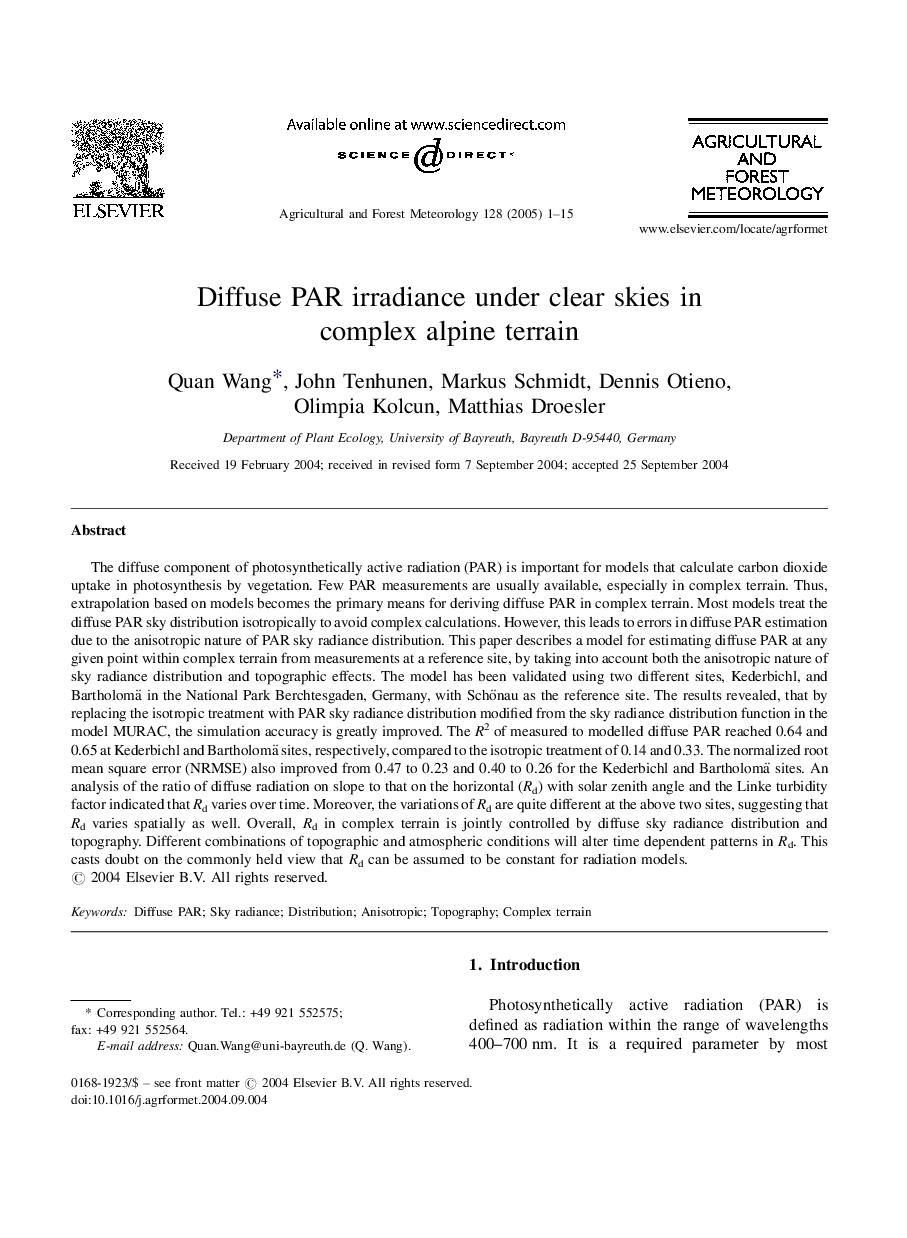| Article ID | Journal | Published Year | Pages | File Type |
|---|---|---|---|---|
| 9619546 | Agricultural and Forest Meteorology | 2005 | 15 Pages |
Abstract
The diffuse component of photosynthetically active radiation (PAR) is important for models that calculate carbon dioxide uptake in photosynthesis by vegetation. Few PAR measurements are usually available, especially in complex terrain. Thus, extrapolation based on models becomes the primary means for deriving diffuse PAR in complex terrain. Most models treat the diffuse PAR sky distribution isotropically to avoid complex calculations. However, this leads to errors in diffuse PAR estimation due to the anisotropic nature of PAR sky radiance distribution. This paper describes a model for estimating diffuse PAR at any given point within complex terrain from measurements at a reference site, by taking into account both the anisotropic nature of sky radiance distribution and topographic effects. The model has been validated using two different sites, Kederbichl, and Bartholomä in the National Park Berchtesgaden, Germany, with Schönau as the reference site. The results revealed, that by replacing the isotropic treatment with PAR sky radiance distribution modified from the sky radiance distribution function in the model MURAC, the simulation accuracy is greatly improved. The R2 of measured to modelled diffuse PAR reached 0.64 and 0.65 at Kederbichl and Bartholomä sites, respectively, compared to the isotropic treatment of 0.14 and 0.33. The normalized root mean square error (NRMSE) also improved from 0.47 to 0.23 and 0.40 to 0.26 for the Kederbichl and Bartholomä sites. An analysis of the ratio of diffuse radiation on slope to that on the horizontal (Rd) with solar zenith angle and the Linke turbidity factor indicated that Rd varies over time. Moreover, the variations of Rd are quite different at the above two sites, suggesting that Rd varies spatially as well. Overall, Rd in complex terrain is jointly controlled by diffuse sky radiance distribution and topography. Different combinations of topographic and atmospheric conditions will alter time dependent patterns in Rd. This casts doubt on the commonly held view that Rd can be assumed to be constant for radiation models.
Related Topics
Physical Sciences and Engineering
Earth and Planetary Sciences
Atmospheric Science
Authors
Quan Wang, John Tenhunen, Markus Schmidt, Dennis Otieno, Olimpia Kolcun, Matthias Droesler,
